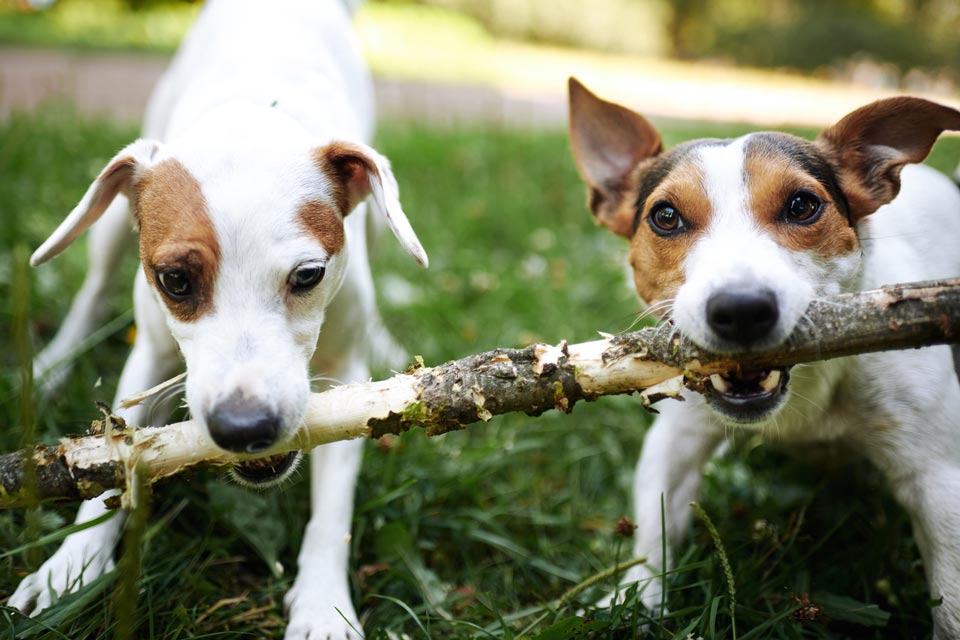How to Tell the Difference Between Playing and Fighting in Dogs

If you have multiple dogs or you take your dog to parks or others' homes to play, it's important to be aware of canine body language. It's not always apparent whether dogs are totally playing or beginning to or actively fight.
Playing Is Crucial for Dogs' Mental Health
Play is a valuable part of a dog's physical and mental health. Of course, playing with humans is terrific and crucial for bonding and good health, but playing with other dogs is equally useful. It helps them get the physical exercise they need and contributes to improved emotional and mental health. However, if there are too many negative interactions, it could trigger social and behavioral problems.
Normal Canine Play
Dogs engaging in normal interaction and play can look and sound ferocious. They might jump high in the air, pounce on one another, growl, snap, grab each other with their teeth, and bark. Sometimes, nearby humans become alarmed at the sights and sounds associated with normal playing among dogs.
Play-Related Canine Behaviors
However, dogs that are playing do some things that let us and each other know they're not serious. For one, they mitigate their bites—they're just nipping. They also take turns being the "winner." So, for example, first, one dog chases the other and then they switch. Or one dog seems to have the upper hand, pinning the other one down to gnaw on his neck, but then they change places.
Dogs that are playing together frequently play bow. This is a body position where the dog goes down onto the backs of his front legs, leaving his behind up in the air. This is a clear sign that he's feeling playful and not angry or scared.
A dog that is playing shows accompanying happy body language. Facial muscles are relaxed, and the tongue is usually lolling out. The tail is relaxed, at about half-mast, and wags easily.
A dog that is fighting has tense body language. The lips may be pulled back from the teeth, and the ears are pinned against the head. The tail is straight or low, and the tongue is not lolling. The hackles are usually raised (fur along the spine is standing up).
If you need to break up a dog fight, don't do so with your body. Try loud noises, spraying water on the pair, or tossing something between them that will interrupt their fight.
You May Also Like These Articles:
What to Do About Food Guarding in Dogs
Can Stress Affect Your Dog's Health?
6 Bad Behaviors in Dogs That We Help Create
Disclaimer: This website is not intended to replace professional consultation, diagnosis, or treatment by a licensed veterinarian. If you require any veterinary related advice, contact your veterinarian promptly. Information at DogHealth.com is exclusively of a general reference nature. Do not disregard veterinary advice or delay treatment as a result of accessing information at this site. Just Answer is an external service not affiliated with DogHealth.com.


